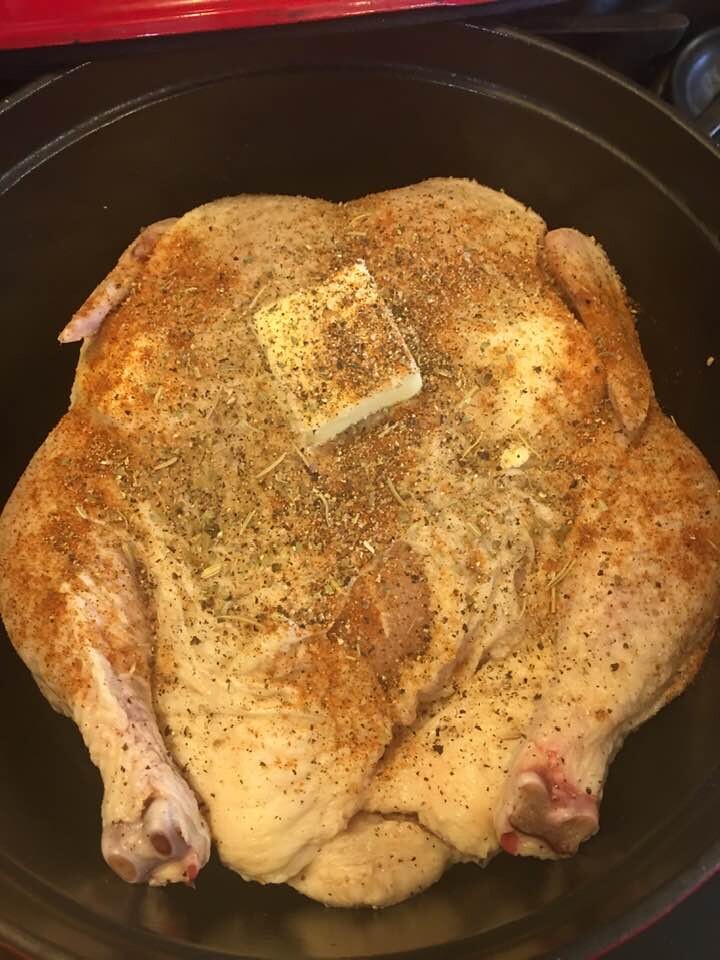Image

A roasting chicken rubbed with Jamaican jerk seasonings!
Disclaimer… this is a poor representation of the real thing. On our many trips to Jamaica we had the privilege of tasting authentic jerk cuisine that left us breathless (literally) with the scorching heat of scotch bonnet peppers, the warmth of pimento (allspice berries), cinnamon, ginger and garlic. The flavor memory is so precious.
Jamaican jerk is deeply interwoven in Jamaican history. The indigenous Arawak and Taino people we credit with the original recipe, gradually died off with the arrival of the Spanish, the British, and their illnesses.

African slaves called Maroons were imported to the island to work the sugarcane fields and brought with them their cooking methods, managing to integrate them with Jamaican seasonings. During this terrible era of slavery, many maroons escaped high into the mountains. To avoid being discovered, they cooked their food in an African technique by roasting it in deep pits without open fires. The jerk seasoning of the indigenous people not only flavored their meat, but tenderized it and preserved it.
If we’re fortunate enough to find a restaurant run by members of the Jamaican diaspora, and there is one in Reading, we’ll be treated to some authentic delicious jerk chicken, rice and peas. For us, today, this roast chicken will have to suffice - with apologies to my friends in Port Antonio!
Jamaican Jerk Chicken boasts a distinctive flavor profile characterized by spices native to the island of Jamaica. Food and Wine magazine offers this recipe and instructions for Jamaican Jerk Chicken; just click here.
High in the mountains above Bally, where the dense groves of treetops seem to touch the sky, is Francine Black, Boyertown’s own version of chef Julia Child. Her daily activities reflect the things she most values: family and friends, music, and lovingly prepared food.